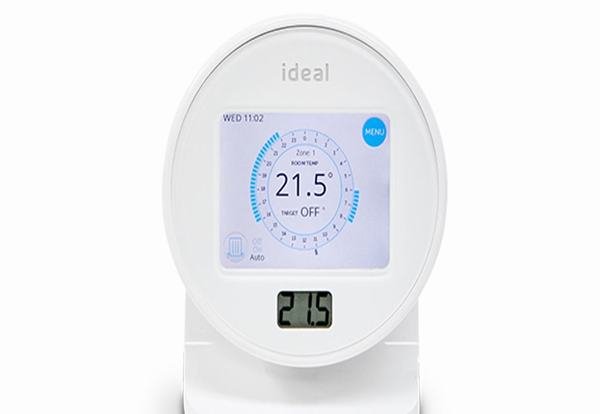December 2018 Newsletter
December 2018 Newsletter
‘Vent-Axia welcomes healthy homes and buildings white paper, Keeping your heating on during freezing weather, STA welcomes governments stance on solar, Three quarters of plumbers at risk of knee problems, Small business receive boost from budget plans‘.
Quick Links
Vent-Axia welcomes healthy homes and buildings white paper
Leading British ventilation manufacturer Vent-Axia is delighted to welcome the All Party Parliamentary Group (APPG) for Healthy Homes and Buildings’ White Paper Building our Future: Laying the Foundations for Healthy Homes and Buildings, published on 24 October 2018. The White Paper makes clear recommendations to the Government on how it can improve standards in housing to benefit occupants’ health and wellbeing. This follows on from the APPG’s green paper published last year which set out the political, economic and business case for healthy homes and buildings.
The White Paper details how, as a nation, healthy homes and buildings can and should be delivered. These fall under three overarching recommendations.
- The Government needs to establish a cross-departmental committee for health and buildings to champion change; recognising the interaction between buildings, health, education and the economy.
- To grow the research and evidence base to develop a clear case for further Government action to improve new build standards.
- To make renovation of current housing stock and infrastructure a Government priority and develop plans for retrofitting that takes a holistic approach to maximising health and wellbeing.
Within these recommendations to help overcome the problem of unhealthy homes the White Paper calls for better and consistent building standards and regulations. It also calls for both New Build building design and building renovations to consider health and wellbeing and take a holistic approach to consider elements such as ventilation, air quality, lighting and acoustics.
“At Vent-Axia we are committed to sharing the importance of ventilation with households to help protect public health. We therefore support the publication of the APPG’s White Paper and welcome its recommendations,” said Jenny Smith, Marketing Manager at Vent-Axia. “Ventilation is often overlooked when implementing energy efficiency measures in homes. This can have a detrimental effect on indoor air quality. Without good ventilation in a home air quality can potentially deteriorate and as a result can lead to condensation, mould and a build-up of toxic chemicals. We are therefore delighted that the White Paper calls for a national renovation strategy that takes a holistic approach to building renovation and that it recommends improved standards and regulations, which will improve installer best practice.”
A staggering 65% of homes in the UK suffer from poor indoor air quality (IAQ) as a result of inadequate ventilation. This is having a significant negative impact on the health of people in their homes with poor IAQ contributing towards many serious health problems such as asthma, lung cancer, strokes and cardiovascular disease.
In the White Paper it cites that poor IAQ is reported to cost the UK over 204,000 healthy life years, with 45% of those lost to cardiovascular diseases, 23% to asthma and allergy and 15% to lung cancer with the Royal College of Physicians warning in 2016 that indoor air pollutants cause at a minimum, thousands of deaths per year and are associated with healthcare costs in the order of ‘tens of millions of pounds’.
The publication of the White Paper follows hot on the heels of DEFRA’s new Clean Air Strategy consultation, published on 22 May 2018, which confirmed the importance of clean air in the home. This draft strategy outlines the Government’s ambitions to reduce air pollution, making our air healthier to breathe, protecting nature and boosting the economy, with the draft setting a clear direction for future air quality policies and goals. The consultation closed in August 2018 and the final UK Clean Air Strategy and detailed National Air Pollution Control Programme is to be published by March 2019.
To help protect health in the home Vent-Axia has been working hard to provide ventilation solutions to improve IAQ for households. Designed to work with the natural air infiltration, continuous ventilation systems control the air path through the home, preventing the migration of damaging humidity and pollutants, such as VOCs.
For new builds, Vent-Axia’s Sentinel Kinetic mechanical ventilation with heat recovery (MVHR) system boasts an impressive 94% thermal efficiency. For private refurbishments, Vent-Axia’s Lo-Carbon Svara offers quiet, disturbance-free running helping ensure good indoor air quality and comfort. Meanwhile the Lo-Carbon Revive and the new PoziDry ProTM PIV unit has been designed specifically with social housing in mind offering an effective continuous ventilation solution for residents.
For up-to-date ventilation guidance visit www.vent-axia.com/healthyhomes. For further information on all products and services offered by Vent-Axia telephone 0844 856 0590 or visit www.vent-axia.com.

Vent-Axia welcomes healthy homes and buildings white paper
Source: Electrical Times
Ideal Boilers adds Amazon Alexa integration to boiler thermostat
Ideal Boilers has announced that it is introducing Amazon Alexa integration to its Touch Connect product, giving customers the option to control their home heating through voice activation.
Touch Connect thermostats can now connect with Amazon’s voice-activated speaker, Amazon Echo, enabling the technology to respond to spoken commands through Alexa.
Customers can now ask Alexa to check their home temperature, turn the heating up or down, turn heating completely on or off or even return to any pre-set schedules. It’s also possible to check what the heating temperature is currently set to before making the decision to adjust. A series of commonly used phrases, such as ‘make it warmer’ or ‘turn the heating down’ have been programmed for use.
Luke Pykett, Head of Marketing at Ideal Boilers, commented: “Earlier this year we responded to increasing consumer demand for smart home devices through introducing Touch Connect, the app-controlled thermostat offering total heating comfort directly from smartphones, and have received fantastic customer feedback.
“As part of our mission to deliver incredible customer service we are continuing to innovate and enhance usability through introducing voice activated command services, making it even easier for customers to control their heating when, where and how they wish to.”
The use of smart speakers in UK homes is on the rise. YouGov reports that UK ownership has doubled in six months, from Q3 2017 to Q1 2018 and around 1 in 10 Brits currently own a smart speaker, which totals around 6.6 million people. 75% of the UK market uses Amazon Echo, making it the clear market leader.

Ideal Boilers adds Amazon Alexa integration to boiler thermostat
Source: HVP Magazine
Keeping your heating on during freezing weather
There are over 1.6 million new Condensing boilers installed every year and they can produce between 600 and 1200 litres of condensate per year which needs to be piped to a drain. If the pipework runs externally, isn’t large enough and insulated with PVC coated weather proof insulation. This pipework can freeze sending the boiler into lockout mode and will leave the home without heating.
Dave Salmon, of Plymstock Gas & Heating Services Ltd in Plymouth is one of many installers across the country that gets called out by his customers’ during harsh winter conditions within the boiler condensate pipes frozen up and putting boilers out of action.
Having followed the boiler manufacturers technical advice which solved the problem in the short term, Dave began working on a long term solution. This led to the development of the Boiler Buoy condensate bypass valve, a solution which allows the engineer or householder to drain off the condensate in a controlled way using a valve connection and hose.
This easy to fit, low cost solution can be fitted as part of the original boiler installation or during emergency call-outs or regular servicing. Once fitted the boiler buoy, will ensure that the boiler can operate uninterrupted throughout the coldest of winter conditions.
On his product, Dave said: “The idea came about following the winter of 2009/10 when the temperature reached a historic low and put tens of thousands of boilers out of action because of frozen condensate pipes leaving many homes without heating. As installers, whilst we can solve the problem in the short term, I felt that a long term solution was well overdue.
The products is now in its 9th year of production and tens of thousands have been installed and are a preferred option for many housing associations looking to avoid tenants being without heat in the winter months on historical boiler installations.
The product has been tested by some of the larger boiler manufacturers and acknowledged as an optional solution to keep boilers running.
During March 2018 we once again encountered severe low temperatures and home across the country were once again left without heating.
The Boiler Buoy is manufactured by Pump House and is available via all major heating wholesalers.

Keeping your heating on during freezing weather
Source: Electrical Trade Magazine
Building controls vital to compliance
BCIA, the Building Controls Industry Association, is encouraging the wider industry to consider the importance of implementing effective building controls from the outset of building projects in order to meet current legislation.
The 10 80 10 rule represents the total lifetime costs of a building, whereby only ten per cent of costs are invested at the design stage while a staggering 80% is spent on the running and maintaining of a building.
The BCIA is calling for a change in approach from those in the supply chain at the initial stages of building projects. By investing in an efficient controls system at the start of construction, this will dramatically lower operational costs in commercial buildings over the long term while also helping to meet a wide range of legislation.
A good example of this is the Minimum Energy Efficiency Standard (MEES) which came into force earlier this year. It is now unlawful for a landlord to let or renew a lease on a property if the Energy Performance Certificate (EPC) rating is F or G.
By installing additional zone control for instance, or demand control of lighting and heating using occupancy sensors, your EPC rating can receive a welcome boost and substantially lower unnecessary energy usage. It is these relatively simple additions to the BMS system that have a significant impact on the EPC rating.

Building controls vital to compliance
Source: HPM Magazine
Queens Cross Housing Association to install 18,000 FireAngel alarms
FireAngel has signed a contract to supply Glasgow-based Queens Cross Housing Association with over 12,000 battery-powered smoke and heat alarms.
The WST630 smoke alarms and WHT630 heat alarms will be installed in over 3,500 properties across the city centre due to Scottish Government’s pending legislative changes following the Grenfell fire tragedy.
Under these changes to the Housing (Scotland) Act, all homes will require sealed long-life battery or mains wired alarms that are interlinked, with one functioning smoke alarm in the room that is frequently used by the occupants in the daytime, one functioning smoke alarm in every circulation space on every floor, such as hallways and landings, and one heat alarm in every kitchen. A carbon monoxide alarm will also need to be fitted in each room with a carbon-fuelled appliance or flue.
The Wi-Safe 2 wireless interlink alarms from FireAngel were chosen not only to ensure each property achieves constant compliance through the use of interlinked alarms installed in the kitchen, hallway and living room, but also due to the utilisation of FireAngel’s Thermoptek Multi-Sensor technology.
Jim Williams, maintenance manager at Queens Cross Housing Association, said, “We’ve used FireAngel’s carbon monoxide alarms in the past, so we know the quality and durability of the brand well. Following the government’s legislative updates, it’s vital that we ensure we’re providing every single tenant with the highest level of protection, which we can easily achieve with FireAngel’s range of interlinked alarms.”
Over an eighteen month period, the alarms will be installed by Queens Cross Housing Association’s maintenance team, with FireAngel’s W2-CO-1OX carbon monoxide alarms also being installed in properties where there is a carbon-fuelled appliance or flue present.
Graham Whitworth, executive chairman of FireAngel, commented, “We are delighted to be providing Queens Cross Housing Association with our range of interlinked alarms. It is crucial that all Scottish housing associations are taking a proactive approach to the new legislative changes and our Wi-Safe 2 alarms help them do just that as they are designed to provide the highest levels of protection at all times.”

Queens Cross Housing Association to install 18,000 FireAngel alarms
Source: Electrical Contracting News
STA welcomes government stance on solar
The Solar Trade Association (STA) has hailed a significant breakthrough for its #Fair4Solar campaign during the Business, Energy and Industrial Strategy
(BEIS) Select Committee Oral Questions.
Energy Minister Claire Perry stated that “solar power should not be provided to the grid for free”, representing a shift in government stance on the issue of fair payments for surplus electricity sold to the grid.
Responding to a question from Kevin Hollinrake MP, she said “I do completely agree that solar power should not be provided to the grid for free and that’s why I’ll shortly be announcing the next steps for small scale renewables.”
She also added in answer to a question from Richard Graham MP: “It would be wrong to have power provided to the grid for free,” and in reply to a question from Alan Whitehead MP, said: “People who have gone through the installation process should not be essentially captive takers should someone want to buy their energy and I’m looking forward to announcing some further deliberations on this shortly.”

STA welcomes government stance on solar
Source: HPM Magazine
Smart meters research facility to open at University of Salford
The UK’s first smart meters research facility opens this month at The University of Salford.
The ‘Smart Meters>Smart Homes’ laboratory aims to supply government and consumers with data and advice on smart meter performance and usage, and provide a research base for industry and manufacturers.
University researchers, working in partnership with industry, will explore how smart meters best work in tandem with the growing array of home technology like energy savers and storage devices, EV chargers, bots, smart speakers, sensors, and wearables.
Lead Researcher Professor Will Swan said: “Domestic energy systems are becoming more complex due to the advent of renewables, time-of-use tariffs, energy storage, and a greater fluidity in the customer-supplier relationship.
“What we currently have is an explosion of tech – but little impact on common objectives like lowering bills, cutting carbon and customer satisfaction. The University of Salford can provide clarity around the benefits, possibilities and pitfalls of this new home energy technology for consumers, regulators and innovators.”
The launch, on 7 December, will be attended by Rebecca Long-Bailey, Shadow Secretary of State for Business, Energy and Industrial Strategy and MP for Salford & Eccles, along with research, industry and consumer representatives.

Smart meters research facility to open at University of Salford
Source: HVP Magazine
Designing longer lasting smart home sensors
Why long-lasting sensors are key to designing the home of the future!
Home automation has been gaining traction over the past few years, with massive developments in features and relevant technologies. However, these technologies are only as effective as their power source. Here, Michele Windsor, global marketing manager at home automation battery provider Ultralife Corporation, explains the importance of having long lasting batteries at the centre of home automationproduct design.
Rube Goldberg machines are a fascinating spectacle to watch, with intricate parts moving around to create a symphony of movement to perform tasks. However, to function, every single part must work perfectly, otherwise it takes a lengthy reset before the spectacle can resume.
Just like in a Rube Goldberg machine, every piece in a smart house must work perfectly in order to create the spectacle that makes your life easier and more efficient. To make sure your smart house is always working, its sensors must always be working.
Sensors are what feed data to the smart house, so it knows what time it is, what the temperature is, or whether the sun is glaring through your windows. Most sensors are battery powered and, as they need to be active constantly, it is important to make sure that they have batteries that are reliable and long lasting.
Based on Ultralife’s experience in the sector, many sensors for smart home devices arrive on the market with CR123A model batteries. However, not all these batteries are created equal. Many are often limited in their battery capacity, which means a shorter operating life for the sensor.
Design engineers can overcome this by choosing a long-lasting CR123A battery suitable for home automation sensors, such as the CR123A range of batteries produced by Ultralife. They have an improved internal spiral construction that provides a higher capacity than is currently available in similar products on the market, while remaining long lasting for home automation functions.
According to data from Strategy Analytics, 38 per cent of homes in the USA will be smart homes by 2019.Because of this, it is incredibly important to set out solid design foundations now. Putting long lasting batteries into smart homes design now will avoid mass sensor outages, customer dissatisfaction and possible backlash against manufacturers in the future.
Whether it be your security cameras, lights, sprinklers, or your fans, sensors keep smart devices fed with relevant information to ensure they are working precisely to maximize user comfort and convenience.
In a sense, making intelligent decisions about smart homes now will allow our future selves to be awed by anintricate connected Rube Goldberg machine, performing millions of tasks simultaneously to make our lives simpler and stress free.

Designing longer lasting smart home sensors
Source: Electrical Trade Magazine
Three quarters of plumbers at risk of knee problems
The study conducted by The IPG, a leading group for plumbing, heating and bathroom specialists, also discovered that 57% of plumbers surveyed felt that they would need to undergo knee replacement surgery in the future due to the hardships of the profession.
Nearly two thirds (59%) also felt that they would be forced to retire early because of the injuries they pick up in their work.
On average, a UK plumber works 47 hours a week, with around half of that time spent on their knees. This can have a detrimental effect, especially if no protective work wear is worn. However, even with kneepads 77% specified that they still experience issues.
Those who have been working for over 30 years were the ones who had the worst knee issues, with 68% stating they have had physio, keyhole surgery or other operations on their knees. However, it’s not just plumbing veterans who are experiencing problems.
Tony Dark, director of trade at The IPG, said: “This is a serious issue that needs to be addressed. We would like to urge all plumbers and installers to ensure they are using specialist protection while on the job, from apprentice level all the way up to those who have been working in the trade for decades.
“It is also essential that if any plumber or installer starts to have any trouble with their knees that they consult a GP straight away in order to discover any possible problems early on to avoid more serious issues.”

Three quarters of plumbers at risk of knee problems
Source: HPM Magazine
Prepare For BS 7671:2018 Coming Into Effect
As we approach the date when the 18th Edition of the IET Wiring Regulations (BS 7671:2018) comes into effect (January 1 2019), it is important for all electrical contractors to ensure that they are up-to-date with the new requirements.
Mark Coles, head of technical regulations at the IET, says, “The 18th Edition of the IET Wiring Regulations contains some significant changes to the way all electrical professionals are required to carry out their work in order to safeguard themselves and the public. With this in mind, it is essential that all electrical professionals ensure that they are up to speed with the new requirements.”
This includes new and amended requirements and recommendations around the use of Arc Fault Detection Devices (AFDDs), Surge Protection Devices (SPDs), methods of support of wiring systems and earthing arrangements for electric vehicle charging equipment, among others.
To help industry get up-to-date, the IET offers a dedicated course on their online training resource, the IET Academy, offering comprehensive training for City & Guild’s 2382:18 qualification.
The IET Academy provides the only course for 2382 that has been prepared by the IET, which jointly publishes the IET Wiring Regulations with BSI. The authors have been carefully selected for their industry experience and knowledge of BS 7671. It is also the only online course to be endorsed by City & Guilds for this qualification.
David Phillips, director of apprenticeships and technical education City & Guilds said, “City & Guilds are committed to the highest standards of skills development and learning in the electrotechnical industry. We are proud to have collaborated with the IET on this innovative online tool, which will up-skill thousands of individuals on the 18th Edition. It will enable electrical professionals to get up to scratch on this important new regulation quickly, flexibly and cost-effectively.”
Fitting around work, the IET Academy provides a learning solution that doesn’t take electricians away from their job and can be completed anywhere and at any time.
The course, which is suitable for anyone needing working knowledge of BS 7671, including electrical installers, designers, specifiers and those working in the inspection and testing of electrical equipment, will also fully prepare electricians for the City & Guilds 2382:18 exam.
Martin Davies, head of the IET academy added, “The IET Academy’s Wiring Regulations course provides a customisable and flexible approach to technical learning and knowledge, allowing electricians to be in control of how their learning is delivered. This not only ensures that the course is manageable around working hours, but by using an IET endorsed course, electricians can be safe in the knowledge that they are familiar with the current requirements for electrical wiring as well as preparing them for their City & Guilds 2382:18 exam.”
The course is available for individuals or for corporate customers. For more information, visit theiet.org/academy-regs-ecn or contact academy@theiet.org.
The IET also offers BS 7671 and a range of expert guidance, both in print and digital versions, to help you get up-to-date ahead of the 18th Edition coming into effect. Find out more at theiet.org/18th-resources-ecn

Prepare For BS 7671:2018 Coming Into Effect
Source: Electrical Contracting News
Ex-gas engineer sentenced for illegal gas work while unregistered
A former gas engineer has been sentenced today after conducting gas work he was no longer registered or competent to do and leaving it in a dangerous condition.
Exeter Crown Court heard how Scott Lowry, who previously traded as S J Lowry Plumbing and Heating, undertook the installation of a new gas boiler at a property in Ivybridge during September 2017. A matter of hours after he had completed the installation, the boiler developed faults and the homeowners reported these faults to him. Mr Lowry attended the address on numerous occasions after the installation but was unable to resolve the issues. A Gas Safe-registered gas engineer later inspected the work and found it to be of poor standard, classing it as ‘At Risk’.
An investigation by the Health and Safety Executive (HSE) found Mr Lowry’s membership of Gas Safe Register had expired on 19 April 2017 and, after this time, he was no longer registered to undertake gas work. Mr Lowry used his old Gas Safe Register number on the commissioning document supplied to the home owners and did so knowing that this was no longer valid. The investigation also found Scott Lowry had left the gas boiler flue that he fitted in a dangerous state that allowed the gas boiler fumes to leak into the property and could have caused carbon monoxide poisoning.
Scott Lowry of Broad Street, Modbury pleaded guilty to breaching Regulations 3(3), 3(7) and 26(1) of the Gas Safety (Installation and Use) Regulations 1998. He has been sentenced to eight months prison, suspended for 18 months for each offence, to run concurrently. In addition he was fined £500, and ordered to pay the homeowners £500 compensation and £1,000 for the prosecution costs.
Speaking after the hearing, HSE Inspector Simon Jones said: “Mr Lowry undertook gas work which he knew he was not registered to do. He deliberately deceived a retired couple.
“The gas work that Mr Lowry undertook put the lives of the homeowners and anyone visiting them at serious risk from carbon monoxide poisoning.
“All gas work must be done by a registered Gas Safe engineer to ensure the highest standards are met to prevent injury and loss of life.”

Ex-gas engineer sentenced for illegal gas work while unregistered
Source: HVP Magazine
Torquay Landlord handed suspended sentence for gas safety failings
A Torquay landlord has been sentenced after failing to ensure proper landlord’s gas safety checks were undertaken at his tenanted property.
Newton Abbot Magistrates’ Court heard how Mr Mehmet Sevim, a former Gas Safe-registered engineer and current landlord of residential properties, had contracted a fitter who was not a member of Gas Safe Register to undertake a landlord’s gas safety check at one of his tenanted properties.
During an investigation by the Health and Safety Executive (HSE), Mr Sevim repeatedly maintained throughout that he had used a person who he could not name to undertake the landlord’s gas safety check for him. He failed to make any checks on the individual, including checking if he was registered with Gas Safe Register. The investigation also found the landlord’s gas safety certificate used false Gas Safe Register engineer details which Mr Sevim later admitted to the court that he had produced the fraudulent certificate. It was also found that Mr Sevim had tried to bribe a prosecution witness before the trial by offering them £300 to change their evidence.
Mehmet Sevim of Ellacombe Church Road, Torquay was found guilty of breaching Regulations 36 (4) of the Gas Safety (Installation and Use) Regulations and has been sentenced to 26 weeks prison, suspended for two years and ordered to undertake 240 hours unpaid work. Mr Sevim was also ordered to pay costs of £5,330.76.
Speaking after the hearing, HSE Inspector Simon Jones said: “Mr Sevim lied throughout this investigation and only at sentencing did finally tell the truth about how he falsified a landlord’s gas safety certificate.
“There can be no excuse for a landlord to ever falsify a gas safety certificate and this sentence should send a clear warning to all landlords’ that the courts take such matters very seriously.
“Landlords must ensure that only Gas Safe-registered engineers work on gas appliances at their tenanted properties. A landlord can check that a person is registered on the Gas Safe Register website and these checks are free and quick.”

Torquay Landlord handed suspended sentence for gas safety failings
Source: HVP Magazine
Households in fuel poverty climb to £2.55 million, despite Government efforts
Fuel poor households in the UK have risen by 210,000 to 2.55 million, according to the Committee on Fuel Poverty’s (CFP) Third Annual Report.
The CFP is an advisory non-departmental public body sponsored by the Department for Business, Energy & Industrial Strategy (BEIS) with a remit to support and challenge the government on its fuel poverty strategy.
The committee has made a series of recommendations on how the government can alter its current strategy to meet 2020/25 milestones, and 2030 targets for fuel poverty and energy efficiency.
As a result of “slow than forecast progress” and an increase in fuel poor homes, the CFP estimates that the funding gap needed to successfully deliver the government’s fuel poverty strategy has increased from £15.1 billion to £17.1 billion.
The fuel poverty strategy is based on the idea that energy efficiency upgrades are the most effective way to tackle fuel poverty. However, because this is fundamentally a long-term strategy, it is important to have assistance schemes in place to help homeowners pay fuel bills and stay warm.
The CFP report recommends that the government improves these relevant schemes to better target fuel poor households and ensure that households in fuel poverty receive assistance at least equivalent to pensioners.
To read the CFP report, and see the committee’s full list of recommendations to the government, click here.

Households in fuel poverty climb to £2.55 million, despite Government efforts
Source: HVP Magazine
Small businesses receive boost from budget plans
ECA and BESA’s call to protect SMEs from employment red tape and to increase support for engineering skills has been reflected in the Budget announcement made by Chancellor Philip Hammond on Monday October 29.
The Chancellor plans to change the way self-employed people working for companies are taxed, by extending the public sector IR35 system to the private sector. The government move is aimed at ensuring that individuals who work through their own companies, but operate like employees, are classified as employees for taxation and national insurance purposes.
This change only applies to private firms with more than 50 employees or a turnover of more than £10 million, in order to protect small businesses from red tape. These medium and large businesses will be responsible for checking contractors’ status from April 6 2020, allowing employers time to prepare.
The Chancellor also acknowledged the vital importance of investing in technical skills, by announcing that the 10% contribution rate that SMEs must pay when they take on apprentices will be halved to 5%, although the exact date this will come into effect remains to be confirmed. While the change applies principally to SMEs, it could also benefit Apprenticeship Levy payers who have used up their levy pot, and wish to take on more apprentices.
Andrew Eldred, ECA director of employment and skills, commented, “The decision to reduce co-investment rates for apprenticeships, and apply IR35 changes in the private sector to medium and large employers, show that the government has taken on board representations from ECA.
“These measures will mean that small businesses won’t be burdened with the changes to taxation, while employers will be able to offer more apprenticeships and narrow the skills gap.”
“We will continue to work closely with government and industry decision makers to ensure the details of the implementation of these budget provisions are in its members’, and the industry’s, best interests.”
Alexi Ozioro, BESA public affairs and policy manager, added, “Overall we are pleased with this budget. Changes to investment allowances, plant and machinery tax breaks, the Apprenticeship Levy and relaxing the rules around repurposing commercial buildings to be demolished and replaced with homes are all welcome.”
“We hoped the Chancellor would have referred back to his Spring Statement promise to ‘tackle the scourge of late payment,’ although other Ministers have made good commitments on this recently.”
A further consultation on the detailed operation of the IR35 reform will be published in the coming months. This consultation will inform the draft Finance Bill legislation, which is expected to be published in summer 2019.
Ahead of the Budget, ECA and BESA issued a five point plan to Chancellor Philip Hammond, including proposals on IR35, technical skills, fair payment, cash retention and low-carbon investment for buildings and infrastructure.

Small businesses recieve boost from budget plans
Source: Electrical Contracting News




